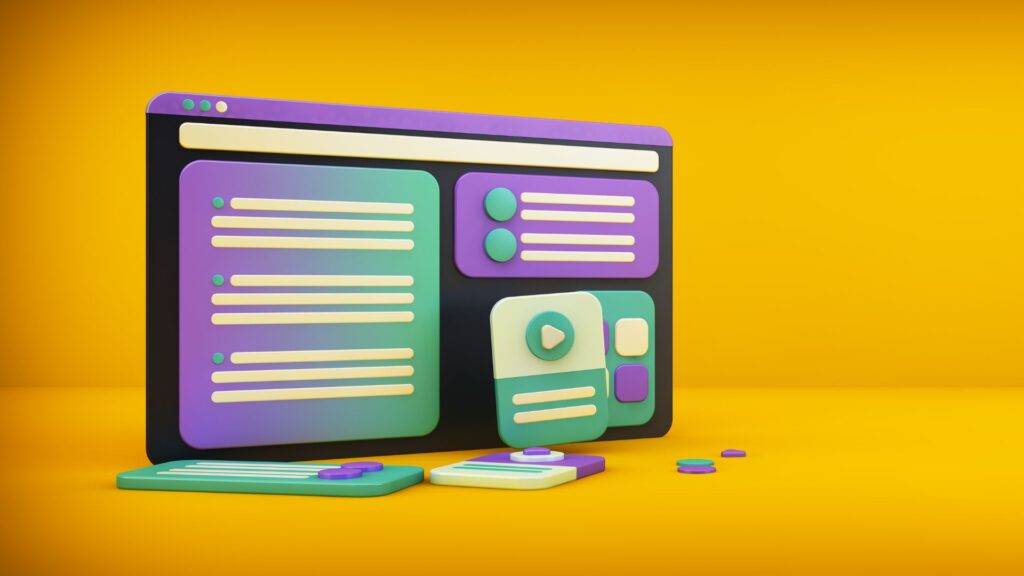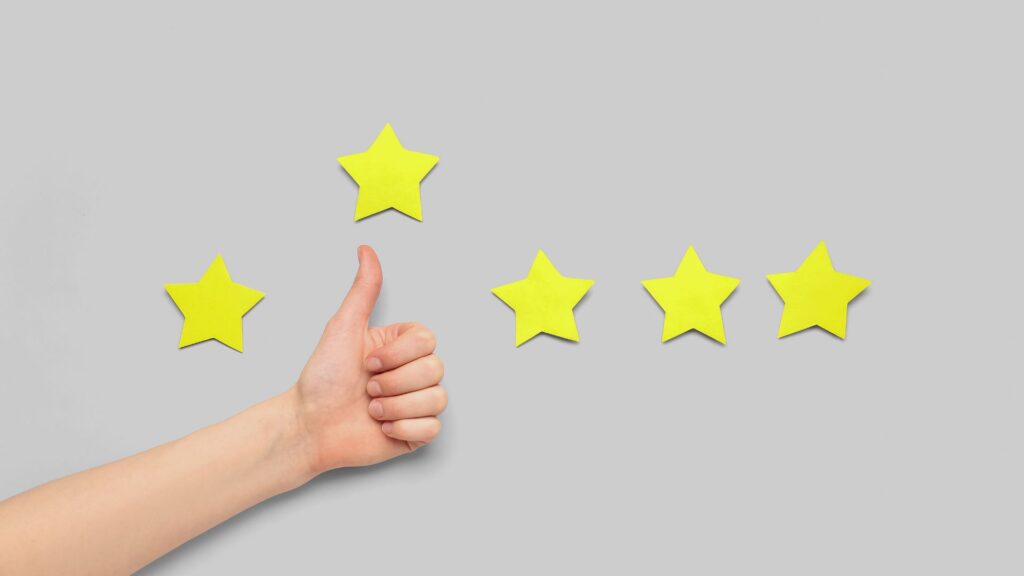In today’s fast-paced digital landscape, marketing technology, or ‘MarTech,’ is not just a trend but the cornerstone of effective marketing strategies. But the real game-changer lies in the powerful combination of MarTech with Software-as-a-Service (SaaS) models. 🚀
This dynamic duo creates a seamless, scalable, and cost-effective solution that can drive remarkable marketing outcomes. So, what makes MarTech SaaS the future of marketing? Get ready to dive into the exciting world of MarTech SaaS and discover its transformative potential for the world of marketing as we know it. Buckle up & join us on this thrilling journey! 💪🌟
What MarTech SaaS Really Is

MarTech SaaS, or Marketing Technology Software-as-a-Service, is the innovative fusion of marketing strategies with cloud-based software solutions. It’s the driving force behind the modern digital marketing ecosystem, enabling businesses to leverage cutting-edge technologies to enhance their marketing efforts. Here’s a breakdown of what MarTech SaaS really is: 💡🚀🌐
- Software-as-a-Service (SaaS): SaaS is a software delivery model where applications are hosted by a third-party provider and accessed online. Unlike traditional software, SaaS is cloud-based and accessible anytime, anywhere, on any internet-connected device.
- Marketing Technology (MarTech): MarTech refers to the range of technical tools and software used to streamline, automate, and analyze marketing tasks and workflows. From CRM systems like Salesforce to social media scheduling tools like Hootsuite, MarTech tools help businesses optimize their marketing strategies for maximum efficiency and effectiveness.
- The Fusion of SaaS and MarTech: When MarTech meets SaaS, the result is a potent combo that revolutionizes the marketing landscape. Companies can access advanced marketing tools without the need for substantial upfront investment, and these tools can be updated, scaled, or replaced with ease, depending on changing business requirements.
For example, email marketing platforms such as Mailchimp function as MarTech SaaS. They offer advanced email marketing tools, analytics, and automation on a subscription basis, eliminating the need for businesses to develop these tools in-house. Another example is SEMRush, a comprehensive SEO tool that provides businesses with valuable insights into their SEO performance, competitive research, and more, all accessible via the cloud. 📧💼
By combining the accessibility and scalability of SaaS with the strategic potential of MarTech, MarTech SaaS is genuinely revolutionizing the marketing industry, offering businesses of all sizes the opportunity to level up their marketing game. 🔥🚀
Five Features of MarTech SaaS

- Scalability: As businesses expand, their marketing needs grow too. MarTech SaaS platforms provide scalable solutions, allowing businesses to easily adjust plans based on current needs. For example, a company utilizing a social media management tool like Buffer can start with a basic plan and gradually scale up as it expands its social media presence.
- Accessibility: Being cloud-based, MarTech SaaS solutions provide tremendous accessibility. Marketers can access the tools they need from anywhere, at any time, and from any device with an internet connection. This flexibility makes collaboration easier, regardless of geographical constraints. Think about Google Analytics, which allows marketers to monitor their website performance from anywhere in the world.
- Cost-Effectiveness: With MarTech SaaS, businesses can avoid the high upfront costs associated with traditional software. Instead, they pay a subscription fee, often on a monthly or annual basis. This model allows businesses to plan their budgets more effectively and reduces the financial risk of investing in new technology. Take HubSpot, a popular marketing, sales, and service software. Its subscription pricing model allows businesses to choose exactly what services they need, matching their budget.
- Integration: MarTech SaaS solutions often integrate seamlessly with other tools and systems. This integration enables marketers to create efficient workflows and eliminate manual data transfer. For instance, CRM software like Salesforce can easily integrate with email marketing tools, social media platforms, and customer support software, consolidating all information in one place.
- Real-Time Analytics and Insights: MarTech SaaS platforms often come with built-in analytics tools, providing marketers with real-time insights into their performance. These data-driven insights can guide strategy, helping businesses make informed decisions and optimize ROI. Consider a tool like Sprout Social, which provides in-depth reports on social media performance, helping businesses understand their audience and adjust their strategy accordingly.
Examples of MarTech SaaS
Here are some illustrative examples of MarTech SaaS that have transformed the way businesses approach marketing: 🌟✨🚀

- HubSpot: As a comprehensive inbound marketing, sales, and service suite, HubSpot offers a variety of tools, including content marketing, SEO, social media, email marketing, and analytics. It enables businesses to manage their marketing efforts in one place and offers integrations with many other tools.
- Mailchimp: Primarily known as an email marketing tool, Mailchimp has evolved to offer a full suite of marketing automation features. The platform’s easy-to-use interface and robust functionality make it a favorite among small to medium-sized businesses.
- Hootsuite: It is a social media management tool that allows businesses to schedule posts, monitor social media conversations, and analyze performance. Hootsuite supports multiple social networks, making it easier for marketers to manage their online presence.
- SEMrush: An all-in-one marketing toolkit, SEMrush offers functionalities for SEO, paid traffic, social media, content and PR, and market research. With its competitive analysis features, businesses can gain insights into their rivals’ strategies and adjust their own for optimal performance.
- Adobe Marketing Cloud: This suite of marketing tools offers solutions for analytics, social media, advertising, targeting, and web experience management. Adobe Marketing Cloud is well-known for its advanced capabilities and integrations with other Adobe products, making it a popular choice for large organizations.
- Drift: Drift offers a new way to connect with customers through conversational marketing. Businesses can generate more leads and accelerate the sales cycle by initiating real-time chats with website visitors. Drift’s chatbot and automation capabilities make it a standout tool in the MarTech SaaS space.
Remember, the right MarTech SaaS solution for your business will depend on your specific needs, resources, and strategy. By thoroughly assessing each tool, you can find a solution that aligns with your objectives and boosts your marketing efficiency and effectiveness. ✅🔍💼📈
5 Pros and Cons of MarTech SaaS

Pros of MarTech SaaS:
- Efficiency: Martech SaaS solutions like Salesforce streamline marketing operations and eliminate the need for manual tasks, enhancing efficiency. Automation features allow for timely and targeted communication with the audience, improving outcomes.
- Data-Driven Decision Making: Tools such as Google Analytics provide real-time insights and metrics that enable businesses to make data-driven decisions. This capacity improves strategy, optimizes resources, and increases return on investment.
- Budget-Friendly: Platforms like Mailchimp offer affordable subscription-based pricing models. This structure bypasses the need for significant upfront investments, making these tools accessible to businesses of all sizes.
- Scalable Solutions: As businesses grow, so do their marketing needs. SaaS solutions like Adobe Marketing Cloud offer scalable features, allowing businesses to upgrade or downgrade their usage as necessary.
- Constant Updates and Improvements: With SaaS solutions, updates are carried out server-side by the provider. It means users can benefit from the latest features and security updates without needing to install anything manually.
Cons of Martech SaaS:
- Dependency on Internet Connection: Being cloud-based, SaaS solutions require a stable and robust Internet connection. Interruptions or sluggish connections can severely impede access and usage.
- Data Security Concerns: With data being stored on the cloud, there may be potential security risks. While providers often implement robust security measures, the risk of data breaches still exists.
- Limited Customization: While SaaS solutions like Hootsuite offer a wide range of features, the scope for customization might be limited compared to in-house developed tools.
- Subscription Costs Add Up: While SaaS tools often seem affordable on a month-to-month basis, the cumulative subscription costs over many months or years can become substantial.
- Learning Curve: While many SaaS tools are user-friendly, others, like SEMrush, can have a steep learning curve. Employees might require training to be able to use them effectively, which can also add to the cost and time investment.
State of B2B MarTech SaaS in 2024

As we look toward the landscape of B2B MarTech SaaS in 2024, several significant trends are shaping the industry: 📈🌟💼
- AI and Machine Learning: Artificial Intelligence (AI) and Machine Learning (ML) are making a profound impact across various sectors, and MarTech SaaS is no exception. Platforms like Marketo are leveraging these technologies to enable predictive analytics, intelligent automation, and personalized customer experiences. As we move into 2024, this trend will likely accelerate, with more advanced AI-driven features being introduced by MarTech SaaS providers.
- Customer Data Platforms (CDPs): CDPs create a unified database accessible to other systems. This data unification enables a more personalized and consistent customer experience across various channels. Companies like Segment and Adobe’s Real-Time CDP are spearheading this trend, and by 2024, we expect more MarTech SaaS providers to offer comprehensive CDP solutions.
- Privacy and Security: With growing concerns around data privacy and regulations like the GDPR and CCPA, MarTech SaaS providers will need to prioritize privacy and security features in their offerings. Tools like OneTrust and TrustArc, which help businesses stay compliant with these regulations, are likely to become more mainstream in the B2B MarTech SaaS space by 2024.
- Integration and Interoperability: As the MarTech landscape continues to expand, the ability to integrate and work seamlessly with other tools will become even more critical. Platforms that offer robust integration capabilities, like Zapier, will be at the forefront of this trend.
- Outcome-Based Marketing: Businesses are increasingly focusing on measurable outcomes and ROI from their marketing efforts. MarTech SaaS providers will continue to evolve their analytics and reporting features, enabling marketers to track performance and measure results more accurately.
In 2024, How many MarTech SaaS products will feature welcome screens?
As of 2024, the exact number of MarTech SaaS products featuring welcome screens is uncertain due to the dynamic nature of the industry and the lack of specific data. However, welcome screens are a common feature in many SaaS products because they offer a number of benefits: 📱💼👋

- User Onboarding: Welcome screens are an effective tool for user onboarding. They guide first-time users through the basics of the software, helping them understand how to navigate and use key features. Tools like HubSpot and Salesforce leverage welcome screens to enhance user experience and facilitate successful onboarding.
- Personalization: Welcome screens can also be personalized based on the user’s role, preferences, and past behavior to deliver a more tailored experience. Adobe Marketing Cloud, for instance, uses welcome screens to present personalized content and recommendations.
- Engagement: A well-designed welcome screen can increase user engagement. It sets the tone for the user experience, fosters positive first impressions, and encourages users to explore the software further. Drift, a conversational marketing platform, uses its welcome screen to engage users right from the beginning.
Given the benefits, it’s safe to say that a significant number of MarTech SaaS products feature welcome screens. As the industry progresses, we can expect more products to incorporate this feature to enhance user experience and engagement.
Conclusion
The B2B MarTech SaaS industry is undergoing a thrilling transformation fueled by technological advancements and evolving customer expectations. 🚀 While challenges exist, the benefits of SaaS solutions far outweigh any drawbacks. As we gaze into the future of 2024 and beyond, anticipate a plethora of innovative solutions and trends that will shape the industry. 💡
This exciting era presents businesses of all sizes with an opportunity to harness MarTech SaaS for their marketing needs. Hence, it is crucial for companies to stay abreast of the latest trends and continuously assess their MarTech stack to keep pace with the ever-changing B2B marketing technology landscape. 📈
By conducting thorough research and careful consideration, organizations can discover the ideal blend of SaaS solutions to streamline their marketing efforts and achieve success in the digital age. So, embrace the boundless possibilities of B2B MarTech SaaS and surge ahead of the competition in 2024 and beyond! 💪🌟

10+ years experience in Marketing and Operations
I don’t think the title of your article matches the content lol. Just kidding, mainly because I had some doubts after reading the article.
Can you be more specific about the content of your article? After reading it, I still have some doubts. Hope you can help me.